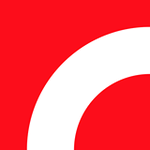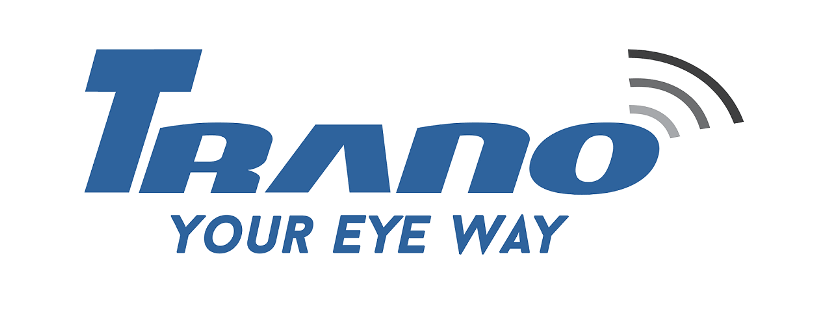Description

Oomnitza

Josys
Comprehensive Overview: Oomnitza vs Josys
To provide a comprehensive overview of Oomnitza and Josys, let's delve into each company's primary functions, target markets, market share, user base, and key differentiating factors.
Oomnitza
a) Primary Functions and Target Markets
- Primary Functions: Oomnitza offers an enterprise technology management platform focused on managing and optimizing IT assets. The platform provides capabilities for lifecycle management, inventory tracking, compliance, and workflow automation. It helps organizations manage diverse IT assets such as hardware, software, cloud resources, and IoT devices.
- Target Markets: Oomnitza primarily targets medium to large enterprises across various sectors including technology, finance, healthcare, and retail that require comprehensive IT asset management solutions to streamline their operations, ensure compliance, and reduce costs.
b) Market Share and User Base
- While precise market share metrics can be proprietary and not publicly detailed, Oomnitza positions itself as a significant player in the IT asset management space, competing with other enterprise software providers.
- User base comprises medium to large enterprises looking for integrated solutions to manage complex IT environments throughout the asset lifecycle.
c) Key Differentiating Factors
- Oomnitza’s differentiation lies in its holistic approach to managing various types of technology assets, offering a single platform that connects with a wide range of IT and business systems for end-to-end visibility.
- Its workflow automation and integration capabilities are notable, allowing for streamlined processes and improved efficiency in managing IT assets.
Josys
a) Primary Functions and Target Markets
- Primary Functions: Josys offers an IT management platform with a focus on simplifying IT operations, particularly around endpoint management, automation, and integration. Key functions include device management, software deployment, remote support, and IT policy enforcement.
- Target Markets: Josys targets small to medium-sized businesses and managed service providers (MSPs) that require efficient IT management tools to simplify their IT operations and provide services to their client base.
b) Market Share and User Base
- Josys serves a niche market of small and medium-sized enterprises (SMEs) and MSPs, aiming to provide affordable yet robust solutions for IT management. Its market share tends to be smaller compared to giants in the IT management space but focuses on providing tailored solutions for its customer base.
- The user base is typically comprised of smaller businesses and service providers looking for cost-effective and scalable IT management solutions.
c) Key Differentiating Factors
- Josys differentiates itself by offering a tailored IT management experience suitable for smaller organizations and MSPs, often emphasizing ease of use and quick deployment.
- The platform is designed to be user-friendly, providing intuitive tools that do not require extensive IT resources, making it suitable for organizations with limited IT personnel.
Comparative Analysis
- Target Audience: Oomnitza targets larger enterprises needing comprehensive asset management, while Josys focuses on SMEs and MSPs looking for streamlined IT operations.
- Platform Capabilities: Oomnitza provides a broader, more integrated platform for managing diverse asset types, while Josys emphasizes simplicity and affordability for endpoint management.
- Market Approach: Oomnitza often competes directly with larger IT management solutions in the enterprise space, while Josys serves niche segments desiring efficient yet scalable IT management solutions.
In summary, both Oomnitza and Josys offer IT management solutions but cater to different market segments and prioritize different functionalities based on their target audiences’ needs.
Contact Info

Year founded :
2012
+1 866-985-0557
Not Available
United States
http://www.linkedin.com/company/oomnitza

Year founded :
2021
Not Available
Not Available
Japan
http://www.linkedin.com/company/josys-inc
Feature Similarity Breakdown: Oomnitza, Josys
When comparing software products like Oomnitza and Josys, which are known for their capabilities in IT asset management, it's important to focus on a few key aspects: core features, user interface, and unique features. Here's a breakdown based on typical offerings in this category:
a) Core Features in Common
Both Oomnitza and Josys emphasize IT asset management and typically share the following core features:
-
Asset Lifecycle Management
- Both platforms offer management of the entire lifecycle of IT assets from procurement to disposal.
-
Inventory Tracking
- They provide tools for tracking physical and virtual assets, allowing for comprehensive inventory management.
-
Automation
- Automation of repetitive tasks related to asset management, including onboarding/offboarding and asset allocation.
-
Reporting and Analytics
- Each offers a suite of reporting tools to analyze asset utilization, compliance, and financial metrics.
-
Integration Capabilities
- The ability to integrate with other systems such as IT service management (ITSM) tools, ERP systems, and other enterprise applications.
-
Compliance Management
- Both provide features for maintaining compliance with regulations and internal policies, such as tracking software licenses.
b) User Interface Comparison
The user interface (UI) is where these products might differ significantly, although they both aim to provide intuitive and straightforward navigation.
-
Oomnitza:
- Known for its modern and user-friendly interface. The design is generally clean, with a dashboard that provides quick insights into key metrics and asset statuses. It places emphasis on workflows and visualizations to simplify asset management tasks.
-
Josys:
- Josys tends to focus on simplicity and ease of use, often structured in a way that is accessible even for users who are not deeply technical. The interface is typically straightforward, with a focus on delivering essential information clearly and concisely.
c) Unique Features
While both platforms aim to provide robust asset management solutions, they might have some unique features that set them apart:
-
Oomnitza:
- Workflow Customization: Oomnitza often highlights its ability to deeply customize workflows to match specific business processes, allowing for more tailored asset management and automation.
- Scalability: Built to cater to large enterprise environments, offering scalability in terms of both breadth of integrations and volume of assets managed.
-
Josys:
- Focus on User-friendly Experience: Josys may put a stronger emphasis on simplifying the IT asset management process for users who are not IT specialists, which can be advantageous for smaller businesses or those with less complex IT needs.
- Localized Features: Depending on the region, Josys might offer features specifically designed to comply with local business practices or regulations.
In making a decision between these two, the choice might come down to the specific needs of your organization, such as the size and complexity of your IT infrastructure, the technical proficiency of your end users, and any specific integration or compliance requirements you may have.
Features

Software Management
Asset Management
Inventory Control
Security Features

Robust Security
Efficient Collaboration Tools
User-Friendly Interface
Best Fit Use Cases: Oomnitza, Josys
Oomnitza and Josys serve different aspects of IT management and have distinct use cases, each tailored to specific business needs and scenarios.
Oomnitza
a) Best Fit Use Cases:
-
Enterprise Asset Management: Oomnitza is ideal for large enterprises that need comprehensive management of IT assets. It excels in providing centralized oversight of both hardware and software assets across an organization. Companies managing a vast array of physical and digital assets will benefit from its capabilities.
-
IT and Operations Teams: It's well-suited for IT departments seeking to automate workflows and integrate asset management into existing business processes. It offers customizable workflows and integration with other enterprise systems like ERP, HR, and ticketing systems.
-
Tech-Heavy Industries: Industries such as technology, finance, and manufacturing with significant investments in IT assets find Oomnitza beneficial for optimizing asset utilization, ensuring compliance, and managing lifecycle processes.
d) Industry Verticals and Sizes:
Oomnitza caters predominantly to medium to large enterprises with complex and diverse IT ecosystems. Its asset management capabilities are broad, making it versatile for various verticals, especially those with regulatory requirements demanding rigorous tracking and reporting of IT assets.
Josys
b) Preferred Use Cases:
-
SMB IT Management: Josys is optimized for small to mid-sized businesses that need straightforward and effective IT management solutions. It provides a balance of powerful features without the complexity that comes with enterprise-level platforms, making it easy to implement and manage.
-
Remote and Hybrid Workforce Management: With an increasing number of businesses supporting remote and hybrid work, Josys efficiently manages IT environments with distributed teams. Features like device management, security, and cloud service integration are tailored to ensure seamless operations across various locations.
d) Industry Verticals and Sizes:
Josys typically serves small to medium-sized companies, though it can scale to larger customers requiring simpler IT management solutions. It's especially relevant in sectors like professional services, startups, and companies with a high degree of remote work infrastructure. Its ease of use and deployment makes it attractive for businesses looking to streamline their IT processes without the need for extensive customization or integration.
In summary, Oomnitza and Josys offer distinct IT management solutions tailored to different business needs and sizes. Oomnitza is ideal for enterprises with complex asset management requirements, while Josys provides SMBs and remote-focused workplaces with a straightforward, effective IT management platform.
Pricing

Pricing Not Available

Pricing Not Available
Metrics History
Metrics History
Comparing teamSize across companies
Conclusion & Final Verdict: Oomnitza vs Josys
To provide a comprehensive conclusion and final verdict for Oomnitza and Josys, we need to evaluate their offerings in the context of asset management solutions, considering factors such as functionality, cost, ease of use, scalability, and customer support.
a) Best Overall Value
Oomnitza is often recognized for its extensive functionality tailored towards comprehensive IT asset management. It tends to offer a more robust feature set suitable for larger enterprises that require detailed visibility and control over a vast array of IT assets, including software, hardware, and cloud services.
Josys, on the other hand, might appeal more to small and medium-sized businesses due to its user-friendly interface and potentially lower cost. It provides a streamlined solution that simplifies asset management without the complexity that might not be necessary for smaller operations.
Best Overall Value: Oomnitza can offer the best overall value for larger organizations with complex IT environments due to its advanced features and scalability. For smaller businesses or those with simpler needs, Josys might provide better value due to its ease of use and cost-effectiveness.
b) Pros and Cons
Oomnitza:
-
Pros:
- Comprehensive toolset with advanced asset tracking and management features.
- Strong integration capabilities with other enterprise systems.
- Scalable platform suitable for large organizations.
- Offers robust reporting and analytics capabilities.
-
Cons:
- Can be overwhelming for smaller businesses or those without dedicated IT teams.
- Higher cost, which might not be justified for simpler needs.
- Steeper learning curve due to its wide range of features.
Josys:
- Pros:
- User-friendly interface that is easy to navigate, making it ideal for beginners.
- Cost-effective, potentially lower pricing point.
- Simplifies the core functions of asset management, making it manageable for smaller teams.
- Cons:
- Limited functionality compared to Oomnitza, which may not meet the needs of larger enterprises.
- Fewer integration options with other business systems.
- May lack certain advanced features like detailed analytics and reporting.
c) Specific Recommendations
-
Assess Organizational Needs: Users should start by evaluating their specific asset management needs. If they anticipate needing sophisticated tracking across various asset types, integrations with multiple enterprise systems, and in-depth reporting, Oomnitza is likely the better choice.
-
Consider Scale and Complexity: For smaller businesses or those looking for simplicity and ease of use rather than a wide array of features, Josys can be a more suitable and cost-effective choice. It's particularly beneficial for companies that do not anticipate significant growth in IT complexity.
-
Budget Considerations: Price sensitivity is crucial. Organizations should compare the total cost of ownership, considering not just the software but also the resources required for implementation, training, and ongoing maintenance.
-
Trial and User Feedback: Engaging in trial periods and seeking feedback from actual users can provide practical insights. Both platforms may offer trials or demos, which should be leveraged to gain real-world experience with the software.
In conclusion, the decision between Oomnitza and Josys should be driven by an organization's specific needs, scale, budget, and technical capacity to leverage the offered features effectively.
Add to compare
Add similar companies




